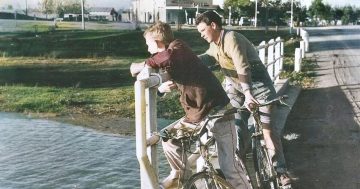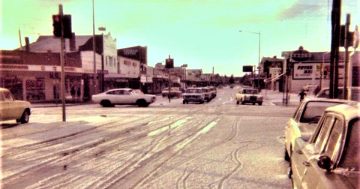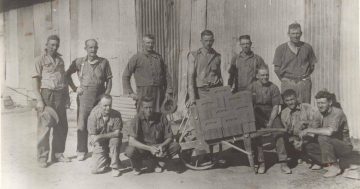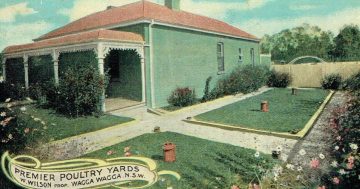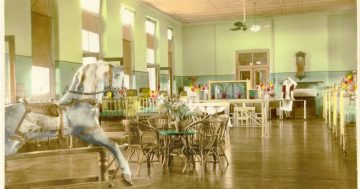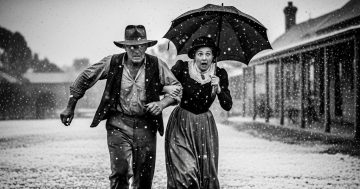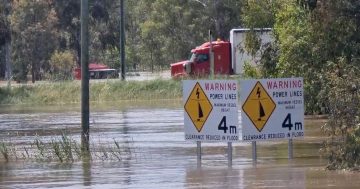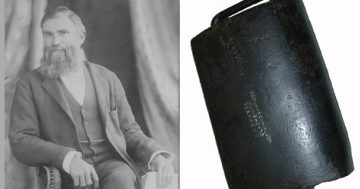
Wagga flood from the air. Photo: Museum of the Riverina.
With the weather we’ve been having lately, the team at the Museum of the Riverina felt it was appropriate to look back on one of the wettest periods in the settlement of Wagga.
This photograph was taken in 1950, and shows the extent of floodwaters prior to the levees being constructed after the 1974 floods.
Take a close look, and you’ll recognise some of the buildings along Fitzmaurice Street. In the foreground left, stands the old Knights building (at that time T. Lawrence and Son, poultry exporters), the Grand Garage visible behind it, and across the road, the Bridge Hotel (at that time with verandah and balcony).
At the top left of the photo, stands the imposing structure of the old Australian Hotel, and to its right (at the centre of the image) is the equally imposing facade of the Capitol Theatre on Gurwood Street). In the far distance, the silos of the Murrumbidgee Milling Company are visible, before the rise of Willans Hill, which is only dotted with residences.
Since the first European settlement in Wagga in the early 1840s there have been 77 floods recorded with heights over 8.23m.
The period 1950 to 1956 was one of severe flooding. 1950 alone had three floods, on 25 March (10.13m), 6 April (9.07m) and 24 October (8.92m).
The T. Lawrence and Son building seen here was only completed in December 1948, and during the March 1950 floods a 24-hour business was in operation, but according to The Daily Advertiser newspaper of 25 March, the full staff were having a desperate struggle preventing floodwater from inundating their new building.
At the same time, more than 400 flood-weary evacuees from Wagga and North Wagga and hundreds of livestock had taken up residence at the Wagga Showground. Mothers put children to bed in sheep stalls, and tea was enjoyed by all in the Kyeamba Smith Hall.
Despite Wagga being largely underwater, life carried on. Hotels reportedly lost few of their regulars. At the Criterion Hotel, many people throughout the afternoon (of 25 March) stood knee deep in water to drink beer. At the Prince of Wales, they were waist deep. The manager of Romano’s, meanwhile, stated that he had expended more than £1000 in an effort to combat floodwaters from entering his premises: “I am determined to beat the floods at whatever costs.”
Photo and information provided by Michelle Maddison, curator at the Museum of the Riverina.







